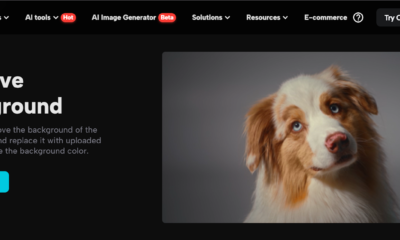Blog
Ethical Concerns and Impacts of iofbodies.com on Digital Morality

In the modern age of internet freedom and digital anonymity, websites like iofbodies.com have emerged as polarizing platforms that test the limits of digital ethics, privacy, and legality. The website has sparked significant debate among netizens, privacy advocates, and ethicists, as it allegedly hosts sensitive and often disturbing content related to real-world tragedies. This article explores the ethical implications, legal ambiguities, psychological impacts, and broader societal concerns associated with such platforms.
What is iofbodies.com?
iofbodies.com is an online platform that reportedly shares explicit images and videos related to death, accidents, and other graphic real-life events. The content on the site includes violent imagery, corpses, and documentation of criminal or tragic occurrences. While the domain has drawn visitors out of curiosity or for forensic study, its core nature makes it controversial and highly scrutinized.
The Ethical Debate Around Graphic Content
One of the primary concerns surrounding iofbodies.com is the ethical dilemma of displaying graphic imagery of deceased individuals without consent. These images often involve real people who have suffered from violence, accidents, or suicides. The ethical issue arises from the lack of permission from families or individuals involved, turning private tragedies into public spectacles.
Supporters of such sites argue that they provide transparency and realism, sometimes useful in education, criminal investigation, or awareness. However, the non-consensual nature and the voyeuristic appeal of the content make these claims weak when compared with the psychological trauma it could cause victims’ families or the desensitization it can create in viewers.
Privacy and Consent: A Legal and Moral Line
Privacy is a human right, even in death. Publishing identifiable imagery of deceased people can violate the posthumous right to privacy and the dignity of the deceased. Although laws vary between jurisdictions, many countries have statutes that protect individuals’ images and personal data even after death. Sites like iofbodies.com often operate in gray areas, skirting the boundaries of legality by hosting content on offshore servers or using anonymizing tools.
This raises critical questions:
- Who has the right to disseminate such content?
- Should web hosts be liable for privacy breaches?
- Can families take legal action?
In most ethical frameworks, consent is key. The absence of informed consent from the deceased or their relatives places these websites in violation of basic moral standards.
Desensitization and Psychological Impact on Viewers
One of the less-discussed yet crucial concerns is the psychological effect of repeated exposure to violent and disturbing content. Prolonged viewing of such material can lead to emotional desensitization, decreased empathy, and in some cases, psychological trauma.
Young viewers or those with vulnerable mental health may be particularly affected. Studies suggest that even brief exposure to graphic death content can lead to:
- Increased anxiety
- Nightmares or flashbacks
- Numbness to violence
- Dehumanization of real victims
Moreover, when death becomes just another scrollable piece of content, the cultural respect for life and dignity erodes.
Voyeurism vs Documentation: A Blurry Boundary
There’s an ongoing debate about whether websites like iofbodies.com serve educational/documentary purposes or simply indulge in digital voyeurism. While some argue that such content is important for forensics students, journalists, or researchers, the reality is that the majority of traffic to these sites comes from casual browsers or those seeking shock value.
This shifts the purpose from knowledge to entertainment at the expense of human dignity, making the defense of such platforms ethically fragile. Without proper context, respect, and usage limitations, these visuals stop being educational and instead become exploitative.
The Role of Content Moderation and Platform Responsibility
In the digital age, content moderation has become a hot topic. Social media giants like Facebook, Reddit, and YouTube have employed thousands of content moderators to filter graphic or harmful material. However, niche sites like iofbodies.com operate outside these frameworks, often ignoring community standards or lacking moderation entirely.
This results in the unfiltered spread of distressing and unethical content. The question then arises: who should regulate such platforms? Some believe that governments should intervene with stricter laws, while others push for ethical AI moderation tools that flag and remove harmful imagery.
Impact on Families and Victims’ Loved Ones
Perhaps the most heart-wrenching impact is on the families and friends of the deceased whose images end up on such sites. For them, the internet becomes a source of repeated trauma, as they are forced to confront the graphic last moments of their loved ones on a public stage.
This is especially painful when content goes viral or is used as memes. The violation of their grief and dignity adds to their emotional burden, making ethical removal policies critical in digital content sharing.
Legal Precedents and Global Regulations
Several countries have started implementing stricter digital laws to tackle privacy violations and unethical content sharing. For example:
- The European Union’s GDPR gives individuals more control over their data—even after death.
- In the United States, some states like California have digital asset laws protecting posthumous rights.
- Australia and Canada have online safety commissions targeting harmful content.
However, the global nature of the internet allows sites like iofbodies.com to evade local laws by switching domains or hosting servers in lenient countries. This demands global collaboration for effective regulation.
Forensics, Journalism, and Ethical Storytelling
In academic and professional fields, images of real-life tragedies can be valuable for training or evidence. However, ethical use includes:
- Blurring identifiable features
- Gaining consent from next of kin
- Contextual explanation
- Restricted access to verified professionals
This balance is rarely struck on public platforms like iofbodies.com, where the lines between journalistic integrity and sensationalism are frequently crossed.
Alternatives to Unethical Graphic Websites
Rather than relying on unethical sites, professionals and curious individuals can seek alternative, ethical sources of educational content, such as:
- Academic databases
- Certified forensic training portals
- Museums of pathology
- Crime documentation archives with access controls
These platforms maintain respect for victims and accuracy, avoiding the exploitative tone seen in shock sites.
Public Awareness and Digital Ethics Education

To prevent the normalization of disturbing content, public awareness campaigns and digital ethics education are essential. Schools, universities, and workplaces should promote:
- Digital empathy
- Critical media literacy
- Consent awareness
- Responsible content sharing
When users become more ethically aware, platforms lose traffic, forcing them to either reform or become irrelevant.
Final Thoughts
Websites like iofbodies.com highlight a growing tension between freedom of expression and ethical responsibility. While the internet is a powerful tool for knowledge sharing, it should not become a playground for voyeurism and exploitation. As digital citizens, we must demand better regulation, ethical standards, and above all, compassion for human dignity—even after death.
-

 Tech12 months ago
Tech12 months agoHow to Use a Temporary Number for WhatsApp
-

 Business2 years ago
Business2 years agoSepatuindonesia.com | Best Online Store in Indonesia
-

 Social Media1 year ago
Social Media1 year agoThe Best Methods to Download TikTok Videos Using SnapTik
-

 Technology1 year ago
Technology1 year agoTop High Paying Affiliate Programs
-

 Tech7 months ago
Tech7 months agoUnderstanding thejavasea.me Leaks Aio-TLP: A Comprehensive Guide
-

 Instagram3 years ago
Instagram3 years agoFree Instagram Auto Follower Without Login
-

 Instagram3 years ago
Instagram3 years agoFree Instagram Follower Without Login
-

 Technology11 months ago
Technology11 months agoLeverage Background Removal Tools to Create Eye-catching Videos


















